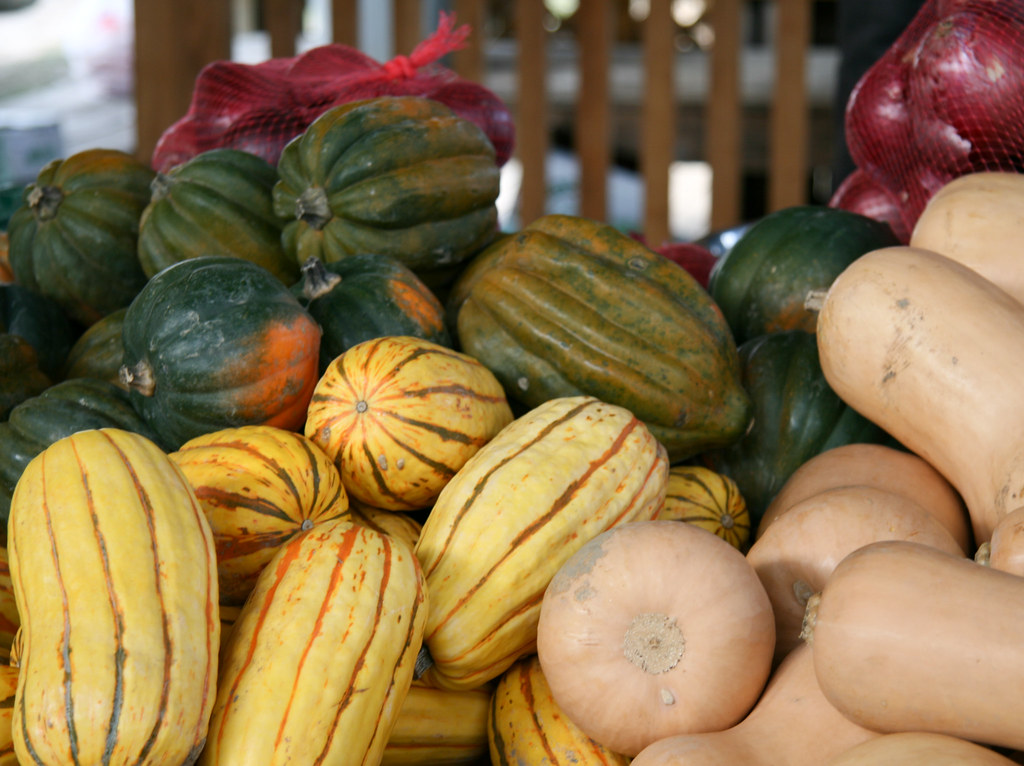Delicious and Nutritious Winter Squash
go.ncsu.edu/readext?742086
en Español / em Português
El inglés es el idioma de control de esta página. En la medida en que haya algún conflicto entre la traducción al inglés y la traducción, el inglés prevalece.
Al hacer clic en el enlace de traducción se activa un servicio de traducción gratuito para convertir la página al español. Al igual que con cualquier traducción por Internet, la conversión no es sensible al contexto y puede que no traduzca el texto en su significado original. NC State Extension no garantiza la exactitud del texto traducido. Por favor, tenga en cuenta que algunas aplicaciones y/o servicios pueden no funcionar como se espera cuando se traducen.
Português
Inglês é o idioma de controle desta página. Na medida que haja algum conflito entre o texto original em Inglês e a tradução, o Inglês prevalece.
Ao clicar no link de tradução, um serviço gratuito de tradução será ativado para converter a página para o Português. Como em qualquer tradução pela internet, a conversão não é sensivel ao contexto e pode não ocorrer a tradução para o significado orginal. O serviço de Extensão da Carolina do Norte (NC State Extension) não garante a exatidão do texto traduzido. Por favor, observe que algumas funções ou serviços podem não funcionar como esperado após a tradução.
English
English is the controlling language of this page. To the extent there is any conflict between the English text and the translation, English controls.
Clicking on the translation link activates a free translation service to convert the page to Spanish. As with any Internet translation, the conversion is not context-sensitive and may not translate the text to its original meaning. NC State Extension does not guarantee the accuracy of the translated text. Please note that some applications and/or services may not function as expected when translated.
Collapse ▲Each garden season provides a bounty of delicious and nutritious foods and the fall season is no exception. Apples and pumpkins immediately come to mind, but autumn brings many other superstars as well.
Winter squash, for example, is plentiful now. Common varieties include acorn, patty pan, butternut, delicata, and spaghetti squash. Unlike summer squash, these varieties have a sweeter flavor and, because of their thick skin, can be stored for up to three months. All types of winter squash pair well with other fall flavors such as cinnamon and ginger and fall fruits like apples and cranberries. And of course, like other yellow and orange vegetables, winter squash is super nutritious.
When choosing winter squash, look for ones that are firm, heavy for their size, and have dull skins (not shiny). They should be hard without cracks or soft spots. Store uncut winter squash in a dark, cool, dry place. Wash squash thoroughly under cool running water just before cutting. Once cut, store in the refrigerator and use within one week.
Winter squash can be baked, roasted, steamed, sautéed, or microwaved. To prepare acorn or butternut squash, cut in half, remove seeds and strings, and drizzle with olive oil. Place cut side down on a baking sheet and bake for 30-45 minutes at 350 degrees. Alternatively, these squash can be peeled, then cubed or sliced and roasted at 450 degrees for 25-30 minutes or until soft. Squash with thick hard rinds, especially butternut, can be very difficult to cut. To soften, poke holes in the rind with a fork and microwave for 2-5 minutes. Delicata squash have thinner skins so they can be sliced and cooked without peeling first. Patty pan squash are best steamed whole and topped with butter and Parmesan cheese. Spaghetti squash can be baked whole and cut in half immediately after cooking. Discard the seeds and rake out the strands with a fork to serve with your favorite pasta sauce.
While winter squash is delicious on its own, feel free to experiment with low-sodium seasonings such as allspice, cinnamon, cloves, ginger, marjoram, or nutmeg. Combining with apples or nuts provides additional flavor and crunch. Leftover squash can be mashed and frozen in one-cup portions for quick use in pies, breads or muffins.
In addition to winter squash, the fall season also features turnips, beets, cabbage, sweet potatoes, collards, and other dark green leafy vegetables. Fruits such as apples, pears, persimmons, grapes, dates, and cranberries are plentiful this time of year as well. When added to salads, eaten fresh, or in combination with a savory meat dish, these fruits really bring fall to the table.
Autumn offers an abundance of satisfying and nutrient-rich foods. To learn more about growing, purchasing, storing, preparing, and cooking healthy foods, contact Cooperative Extension at 287-6010, visit our website at rutherford.ces.ncsu.edu, or Facebook @ rutherfordcountyFCS.




